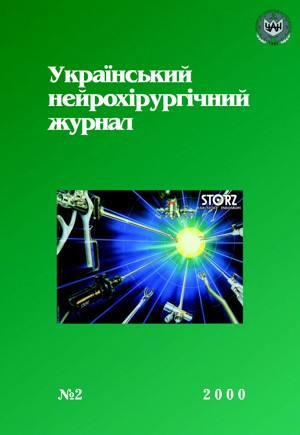Use of weak magnetic field in intensive therapy of brain oedema and swelling in acute craniocerebral injury
Keywords:
weak low-frequency electromagnetic field, magnetic therapy, swelling, brain, bound water, hydrates, hydrationAbstract
The opportunities of combined action of weak constant and low frequency alternating magnetic fields on decreases of an edema and swelling of cells of a tissue of a brain in an acute craniocerebral injury are surveyed. New concept of the description of water-electrolyte exchange in cell a head brain is developed. With growth of number amino acids-crystalhydrates (AAC) on lesion a site of brain tissue decreases of permeability of a cell membrane and a cell metabolism. The external influence of vibron oscillations of AAC stimulates of a cell tissue dehydration of head brain.
References
1. Shuvalova L, Ostrovskaya M, Sosunov E, Lednev V. [Effect of a weak magnetic field mode parametric resonance in the rate of calmodulin-dependent phosphorylation of myosin in the solution]. Dokl AN SSSR. 1991;317(1):227-230. Russian.
2. Cherniy V, Kardash A, Gorodnik G, Drobotko V. [Diagnosis And Treatment Of Edema And Swelling Of The Brain]. Kiev: Zdorov’ya; 1997:227. Russian.
3. Zhadin M, Kovalev A, Nikanor A. [The numerical solution of the equations of motion of the ion in the macromolecule at the combined effect of direct and alternating magnetic fields]. Biofizika. 1998;43(2):253-259. Russian.
4. Kardash A, Englezi A, Drobotko V. [The influence of magnetic field on the reduction of traumatic edema and swelling of the brain in animals]. Arkh klin i eksperim meditsiny. 1996;5(1):58-63. Russian.
5. Lednev VV. [Bioeffects of weak static and alternating magnetic fields]. Biofizika. 1996 Jan-Feb;41(1):224-32. Russian. [PubMed]
6. Novikov V. [Cooperative effect of resonance amplification of the ion current in aqueous solutions of amino acids under the action of weak electromagnetic fields. Approaches to experimental and theoretical analysis]. Biofizika. 1996;41(5):973-978. Russian.
7. Novikov VV. [Electromagnetic bioengineering]. Biofizika. 1998 Jul-Aug;43(4):588-93. Russian. [PubMed]
8. Novikov VV, Novikova NI, Kachan AK. [Cooperative effects in the action of weak magnetic fields on the tumor process in vivo]. Biofizika. 1996 Jul-Aug;41(4):934-8. Russian. [PubMed]
9. Likhterman L, Kornienko V, Potapov A. [Traumatic Brain Injury: Prognosis And Outcomes]. Moscow: Kniga LT2; 1993:299. Russian.
10. Adair R. Constraints on biological effects of weak extremely-low-frequency electromagnetic fields. Physical Review A. 1991;43(2):1039-1048. [CrossRef]
11. Blackman C.F., Benane S.G., Hous D.E. Abstr. 7th Annual Meeting of BEMS. 5th edition. San Francisco, 1985.
12. Hendee S, Faour F, Christensen D, Patrick B, Durney C, Blumenthal D. The effects of weak extremely low frequency magnetic fields on calcium/calmodulin interactions. Biophysical Journal. 1996;70(6):2915-2923. [CrossRef]
13. Kardash AM, Englezi AP, Drobotko VF. New method of treatment of brain oedema and swelling. J Neurotrauma. 1995;12(3):431.
14. Nordén B, Ramel C. Interaction Mechanisms Of Low-Level Electromagnetic Fields In Living Systems. Oxford: Oxford University Press; 1992.
15. Liboff AR. Interaction between electromagnetic fields and cells. N.Y.: Plenum Press. 1985. NATO ASI, series A 97:281.
Downloads
How to Cite
Issue
Section
License
Copyright (c) 2000 Anatoliy Kardash, Valeriy Drobotko

This work is licensed under a Creative Commons Attribution 4.0 International License.
Ukrainian Neurosurgical Journal abides by the CREATIVE COMMONS copyright rights and permissions for open access journals.
Authors, who are published in this Journal, agree to the following conditions:
1. The authors reserve the right to authorship of the work and pass the first publication right of this work to the Journal under the terms of Creative Commons Attribution License, which allows others to freely distribute the published research with the obligatory reference to the authors of the original work and the first publication of the work in this Journal.
2. The authors have the right to conclude separate supplement agreements that relate to non-exclusive work distribution in the form of which it has been published by the Journal (for example, to upload the work to the online storage of the Journal or publish it as part of a monograph), provided that the reference to the first publication of the work in this Journal is included.









